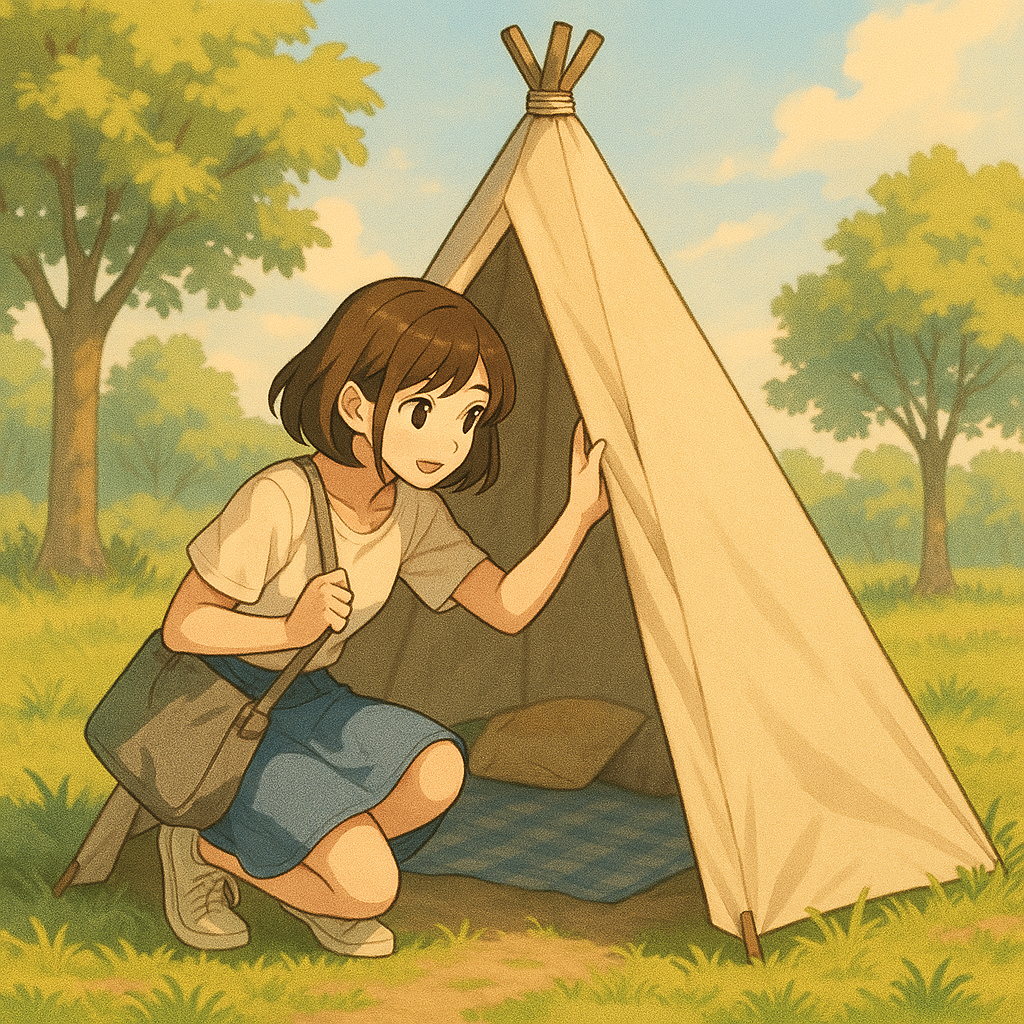入
Mnemonic
Picture a teepee-shaped entrance. You can GO IN through this opening, or you can PUT all of your belongings INside. Use this image to help you remember both GO IN and PUT IN.

入 vs. 人
These two kanji look very similar! A quick way to tell them apart:
– 人 (PERSON) has both strokes spreading out evenly, like two legs equally spread apart.
– 入 (GO IN) has the left stroke shorter, as if stooping low to enter a place.
Keep this difference in mind so you don’t mix them up.
Example Vocabulary
- 入れ子(いれこ) – nested (like Russian dolls, or a nested structure) Click to recall: 子 =
- 入山(にゅうざん) – entering a mountain (often for climbing or temple training) Click to recall: 山 =
-
日の入り(ひのいり) – sunset
Click to recall: 日 = -
月の入り(つきのいり) – moonset
Click to recall: 月 = -
水入れ(みずいれ) – water container
Click to recall: 水 =
Entering and enclosing
The kanji 入 often shows two patterns: stepping into something (like mountains or water) and putting things in (like nested boxes or a water container).
From there, its meaning extends to natural cycles such as the sun going in at sunset or the moon going in at moonset, making 入 one of the most versatile kanji you’ll encounter early on.
Example Sentences
- ロシアのにんぎょうは入れ子のかたちです。– Russian dolls have a nested form.
- ゆうがた、きれいな日の入りをみました。– In the evening, I saw a beautiful sunset.